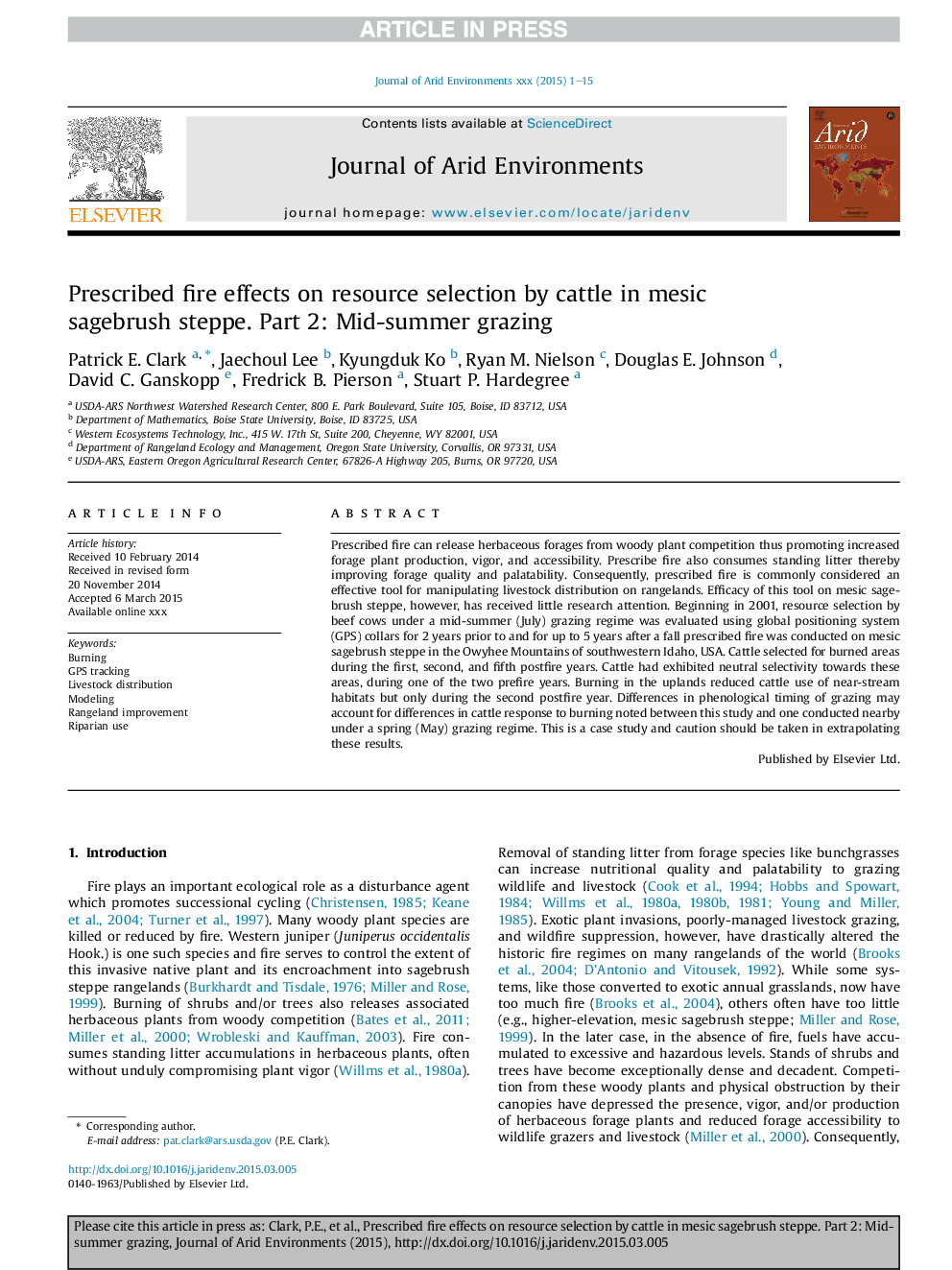| Article ID | Journal | Published Year | Pages | File Type |
|---|---|---|---|---|
| 6303355 | Journal of Arid Environments | 2016 | 15 Pages |
Abstract
Prescribed fire can release herbaceous forages from woody plant competition thus promoting increased forage plant production, vigor, and accessibility. Prescribe fire also consumes standing litter thereby improving forage quality and palatability. Consequently, prescribed fire is commonly considered an effective tool for manipulating livestock distribution on rangelands. Efficacy of this tool on mesic sagebrush steppe, however, has received little research attention. Beginning in 2001, resource selection by beef cows under a mid-summer (July) grazing regime was evaluated using global positioning system (GPS) collars for 2 years prior to and for up to 5 years after a fall prescribed fire was conducted on mesic sagebrush steppe in the Owyhee Mountains of southwestern Idaho, USA. Cattle selected for burned areas during the first, second, and fifth postfire years. Cattle had exhibited neutral selectivity towards these areas, during one of the two prefire years. Burning in the uplands reduced cattle use of near-stream habitats but only during the second postfire year. Differences in phenological timing of grazing may account for differences in cattle response to burning noted between this study and one conducted nearby under a spring (May) grazing regime. This is a case study and caution should be taken in extrapolating these results.
Related Topics
Physical Sciences and Engineering
Earth and Planetary Sciences
Earth-Surface Processes
Authors
Patrick E. Clark, Jaechoul Lee, Kyungduk Ko, Ryan M. Nielson, Douglas E. Johnson, David C. Ganskopp, Fredrick B. Pierson, Stuart P. Hardegree,
